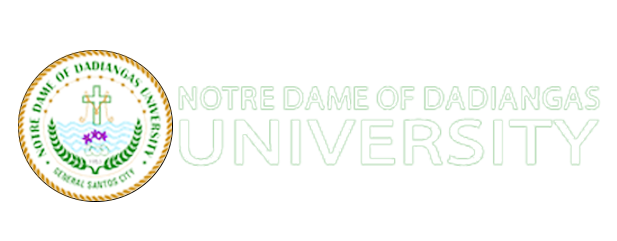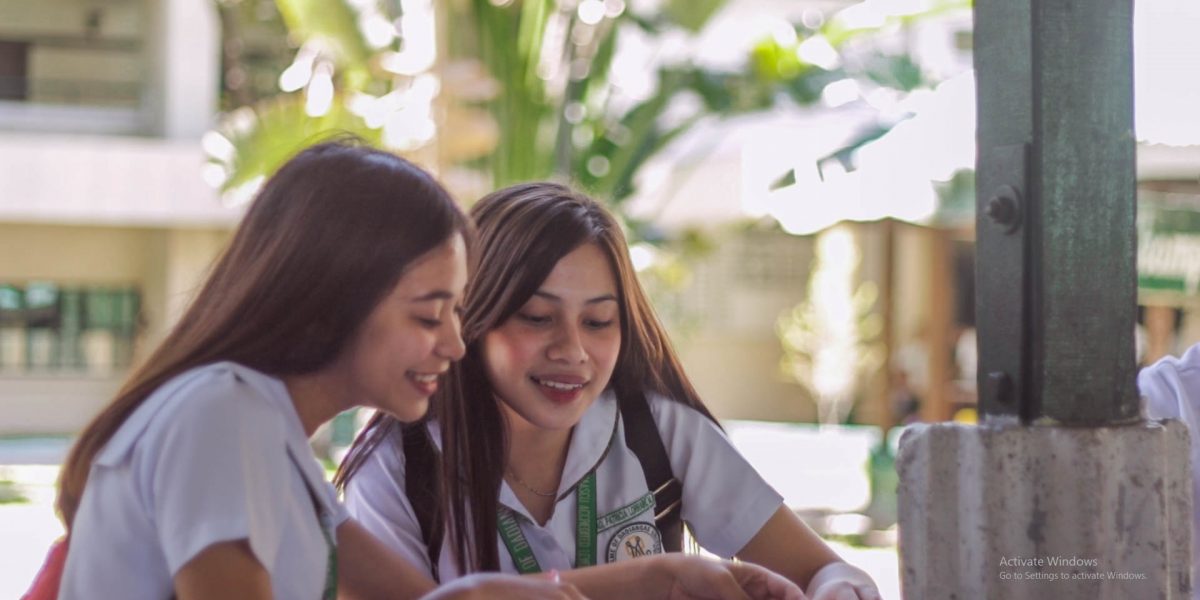Radio is still acknowledged as the primary source of news and the most pervasive, persuasive, and credible medium as more people tend to listen longer to it. Most people listen to radio while at work and during commute which may take longer when there is traffic congestion. Also, the convergence of internet and mobile phone has transformed the FM broadcast radio in the Philippines to reach mobile listeners. This research evaluated the facilities, operations and the current practices of the licensed FM radio stations as basis for the development of NDDU campus radio. The researchers gathered the data using the checklist survey questionnaire, interview guide and on-site observation. They treated the data collected with frequency count and percentage. Observations were described and noted. Results of the investigation revealed that the radio stations have complied the requirements set by KBP and NTC in terms of its operations and management. For facilities, only 80% of the requirements were complied. Some equipment of the radio stations was not present on-site but they were available in the mother station. With regards to practices, there were not much of differences among radio stations’ current practices on their proper program handling, record keeping, and updating of licenses. The developed design of the prototype NDDU Campus Radio station included the estimate of the cost of equipment and reconditioning of the rooms, and layout of the proposed radio stations’ control room and studio room. Reconditioning of the two rooms for acoustic enhancement was made to make the room fit for operation.
Introduction
Broadcasting on radio can bring voices to a large number of listeners from long distance (Adreeja, 2019). It is for this reason that some schools put up radio stations in their campuses. There are several benefits in running a School Radio system, especially when it is built using industry standard technology that offers professional tools in a way that is simple and accessible by presenters of all ages.
A campus radio will help build an inclusive atmosphere in the school. Moreover, it will allow students to express their views and build their confidence whether it is discussing important issues or sharing ideas. It will also harness the speaking and listening skills of students which are essential in ‘real world’ setting. Aside from that, it will keep members of the staff, members of the faculty, students and parents/guardians alike, updated with school activities and offer platform for students to discuss issues that matter to them in a non-confrontational format. Lastly, it will promote teamwork among presenters, engineers and station management (Broadcast Radio Group, 2019).
The reflection of Mr. Rajib Shaw of Keio University (Shaw, 2018) revealed that when a major disaster hit Japan, community radios play the role of disaster radios, or emergency disaster radios when set up in the affected area. Victims can obtain the information they need to overcome the disaster. Aside from it, the role of community radios in disaster management is not confined to providing disaster information only. That is, the community radio is the ideal tool because it has deep roots in the community, has built bonds among the people, and maintains a community identity.
Public safety authorities know that radio is the single most reliable outlet for information, which is why a battery-operated radio is so important and always part of any preparedness kit recommended by every organization from local agencies and the Red Cross. Amateur radio operators provided assistance by helping to track the storm and by spreading the word about evacuations and flooding updates. Others are bonding together in order to help families reach loved ones in the Philippines by radio.
By far, radio is still acknowledged as the primary source of news and the most pervasive, persuasive, and credible medium. It reaches 85 to 90 percent of the population with over 25 million sets nationwide (Tuazon, n.d.). The study of Viray and Viray (2014) also revealed that the convergence of internet and mobile phone transformed the FM broadcast radio in the Philippines to reach mobile listeners.
Radio broadcasting in the Philippines started as early as 1924. Meanwhile, campus radio broadcasting started around 1950’s in the main campus of University of Santo Tomas (UST). At Notre Dame of Dadiangas University (NDDU), citizen band (CB) radios are used during special events like intramurals, university week, acquaintance, pastoral days and the like and during the conduct of emergency drills to facilitate proper coordination. But there is no platform for centralized dissemination of information during the conduct of these activities. The schools’ student organizations are making use of a rented sound system to announce the activities and results during intramurals and university week.
Furthermore, the Electronics Engineering students visit several radio stations to see the actual situation on how the radio station broadcast and operate as they will be concerned on the design of the radio station which is an important aspect in broadcasting.
Statement of the Problem
This study explored the possibility of establishing a campus radio in Notre Dame of Dadiangas University to be the first school in SOCCSKSARGEN to operate a school-based radio system, thus the study accomplished the following:
- Determined the current practices of radio stations in terms of their:
- Broadcasting Operation,
- Technical Facilities and
- Management;
- Evaluated the compliance of the radio stations with the standards set by accrediting government and non-government agencies in terms of their
- Technical Requirements and
- Operating Requirements;
- Designed a prototype for NDDU campus radio; and,
- Determined the economic benefit of putting up a campus radio at
Research Methodology
The study developed a campus radio for NDDU through the results of the researchers’ evaluation of the present facilities and operations of the registered AM and FM radio stations in General Santos City. A descriptive-evaluative method was used in this study. In addition, some evaluation intuition can be made about the research setting. Descriptive schema is concerned with the conditions of relationship that are present. In this sense, this research entailed a purposeful analysis, classification, and tabulation of data about the prevailing conditions, practices, processes, and the cause and effect of relationship of data with or without the help of statistical methods.
The data came from the proprietors of radio stations, National Telecommunication Commission (NTC), observations, guidelines, and standards. This research determined the practices of FM radio stations in General Santos City in terms of their business operations. The information gathered from the results of the investigation became the basis for the design of the FM facilities, developed for NDDU. All the NDDU campus radio’s specifications were based on the standards set by NTC and best practices of the existing radio stations in the city.
References
Adreeja. (2019). Describe the role of radio in mass communication. Retrieved February 27, 2020 from: https://brainly.in/question/8498457.
Ateneo de Manila University goes on air. Retrieved February 23, 2020 from https://~ jescom.ph/2018/02/ateneo-de-manila-university-goes-on-air/
Bragg, S. (2018). How to calculate the payback period. Retrieved February 21, 2020 from https://www.accountingtools.com/articles/how-to-calculate-the-payback- period.html
Broadcast Radio Group (2019). School Radio. https://www.schoolradio.com/benefits
Crane, M. and Corvigno, G. (n.d.). A Brief History of the Radio. Retrieved February 20, 2020 from https://web.bryant.edu/~ehu/h364proj/sprg_99/corvigno/history~
radio.htm
DZST-Manila. Retrieved February 21, 2020 from https://www.revolvy.com/page/DZST~ -(Manila)
Ermann, Michael (2014) Architectural acoustics illustrated Hoboken, New Jersey : John Wiley & Sons, Inc.
Gibson, C. (2005). Recording Studios: Relational Spaces of Creativity in the City. Music and the City. Vol. 31, No. 3, pp. 192-207. Retrieved from https://www.jstor~ .org/stable/431260?seq=1
Green FM. Retrieved February 20, 2020 from https://www.dlsud.edu.ph/GreenFM.htm
Heinrich Hertz. Retrieved February 21, 2020 from https://nationalmaglab.org/education/~ magnet-academy/history-of-electricity- magnetism/pioneers/heinrich-hertz
Imagining the Internet: 1890s – 1930s – Radio. Retrieved February 23, 2020 from ~ http://www.elon.edu/e-web/predictions/150/1890.xhtml
Importance of radio Monitoring. Retrieved June 29, 2018 from http://www.tele.soumu.go.jp/e/adm/monitoring/summary/general/index.htm
Kuttruff, H. (1990). Room acoustics. Retrieved from https://ebookcentral.proquest.com
NTC Annual Report 2015. Retrieved July 10, 2018 from http://ntc.gov.ph/wp- content/uploads/2015/10/reports/Annual_Report_2015.pdf
Radio Television Stations in the Philippines (2007). Retrieved June 13, 2018 from http://www.kbp.org.ph/facts-figures/radio-and-television-stations-in-the- philippines-1998-to-2006.
Recording Studio Acoustics. Retrieved February 23, 2020 from http://hyperphysics.phy-astr.gsu.edu/hbase/Acoustic/studio.html
Return on Investment. Retrieved February 22, 2020 from https://www.valuebased~ management.net/methods_roi.html
Reverberation Time. Retrieved February 24, 2020 from https://www.britannica.com~
/science/acoustics/Reverberation-time
Scientist of the Day. Retrieved February 20, 2020 from https://www.linda hall.org/lee- de-forest/
Scott, C. (2001). The Radio Inventor/Entrepreneurs. Retrieved February 21, 2020 from https://www.westga.edu/~bquest/2001/radio.htm
Shaw, R. (2018). Roles of Community Radio in Disaster Management: Reflections from Japan. https://www.researchgate.net/publication/302197895
Sterling, C. and Kitross, J. (2002). Stay Tuned: A History of American Broadcasting, 3rd ed. New York: Routledge.
Soon, Christopher Jay R. (2003). Communication Engineering. Cebu, Philippines: HR Publishing.
Sound Wave Reflections. Retrieved February 23, 2020 from https://www.control~ noise.com/support-tools/about-sound-waves/sound-wave-reflection/
Tanoy, Amy D. (2009). The Future of Public Broadcasting in the Philippines. Retrieved June 27, 2018 from http://www.jamco.or.jp/~ 2009_symposium/en/005/ index.html
Technical Standards and Operating Procedures for FM Broadcasting Stations. Shaw, R. (2014). Roles of Community Radio in Disaster Management: Reflections from Japan. https://www.researchgate.net/publication/302197895Retrieved July 5, 2018 from http://www.kbp.org.ph/wp-content/uploads/~ 2008/04/Technical-Standards-and-Operating-Procedures-for-FM-Broad~ casting-Stations-%E2%80%93-Page-1-to-8.pdf
Technical Standards and Operating Procedures for FM Broadcasting Stations. Retrieved July 5, 2018 from http://www.kbp.org.ph/wp-content/uploads/~ 2008/04/Technical-Standards-and-Operating-Procedures-for-FM-Broad~ casting-Stations-%E2%80%93-Page-9-to-19.pdf
Technical Standards and Operating Procedures for FM Broadcasting Stations. Retrieved July 5, 2018 from http://www.kbp.org.ph/wp-content/uploads/~ 2008/04/Technical-Standards-and-Operating-Procedures-for-FM-Broad~ casting-Stations-%E2%80%93-Page-20-to-33.pdf
Technical Standards and Operating Procedures for Medium Frequency Broadcasting Stations. Retrieved July 6, 2018 from http://www.sme.com.p~ h/kbpdocs/tsor- medium-freq-bs-page_1_to_16.pdf
Technical Standards and Operating Procedures for Medium Frequency Broadcasting Stations. Retrieved July 6, 2018 from http://www.sme.com.p~ h/kbpdocs/tsor- medium-freq-bs-page_17_to_36.pdf
Technical Standards and Operating Procedures for Medium Frequency Broadcasting Stations. Retrieved July 6, 2018 from http://www.sme.com.p~ h/kbpdocs/tsor- medium-freq-bs-page_37_to_43.pdf
Tongco, M.D.C. (2007). Purposive Sampling as Tool for Informant Selection.
Retreived February 29, 2020 from http://hdl.handle.net/10125/227
Tuazon, R. (n.d.). Radio as a Way of Life. Retrieved from https://ncca.gov.ph/about-ncca-3/subcommissions/subcommission-on-cultural-disseminationscd/communication/radio-as-a-way-of-life/
UM Broadcasting Network. Retrieved February 24, 2020 from https://northminbroad~ casters.com/UM_Broadcasting_Network UP-FM. Retrieved February 20, 2020 from https://iskwiki.upd.edu.ph/index.php/UP-
~FM#.W5ih0l4zZnI
Viray, R.D. & Viray, T.B. (2014). The Convergence of Philippine FM Broadcast Radio with the New Media. Unpublished Undergraduate Thesis, University of the Philippines College of Mass Communication. https://iskwiki.upd.edu.ph/~ index.php/The_Convergence_of_Philippine_FM_Broadcast_Radio_with_the_
~ New_Media
Waits, J. (2013, November 11). Amateur Radio Operators Assist During and After Typhoon in Philippines. Retrieved July 19, 2018 from http://www.radiosurvivor.com/2013/11/11/amateur-radio-operators-assist- during-and-after-typhoon-in-philippines/
White, T. (2003, March 11). United States Early Radio History. Retrieved February 25, 2020 from http://earlyradiohistory.us/sec012.htm.


